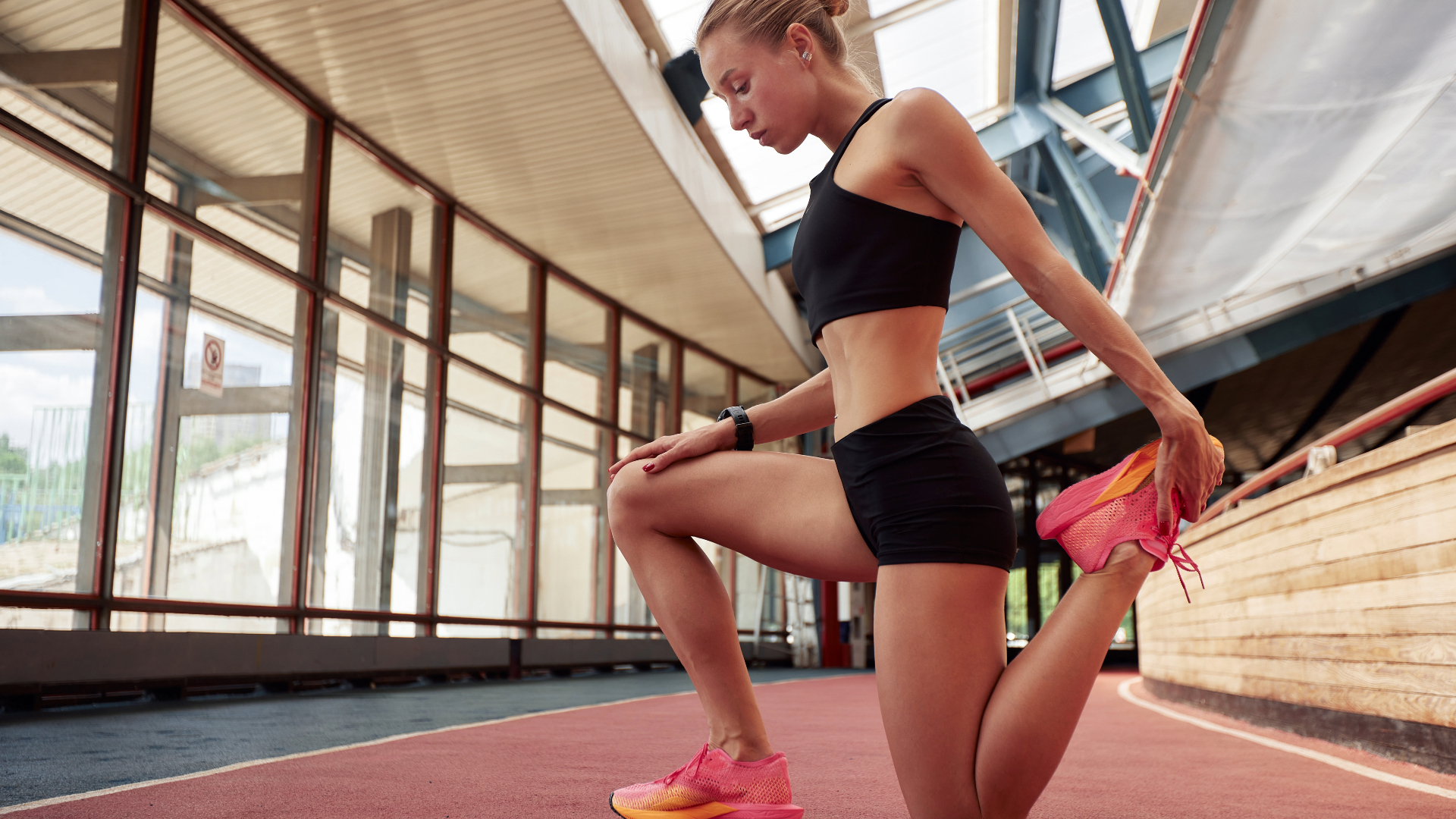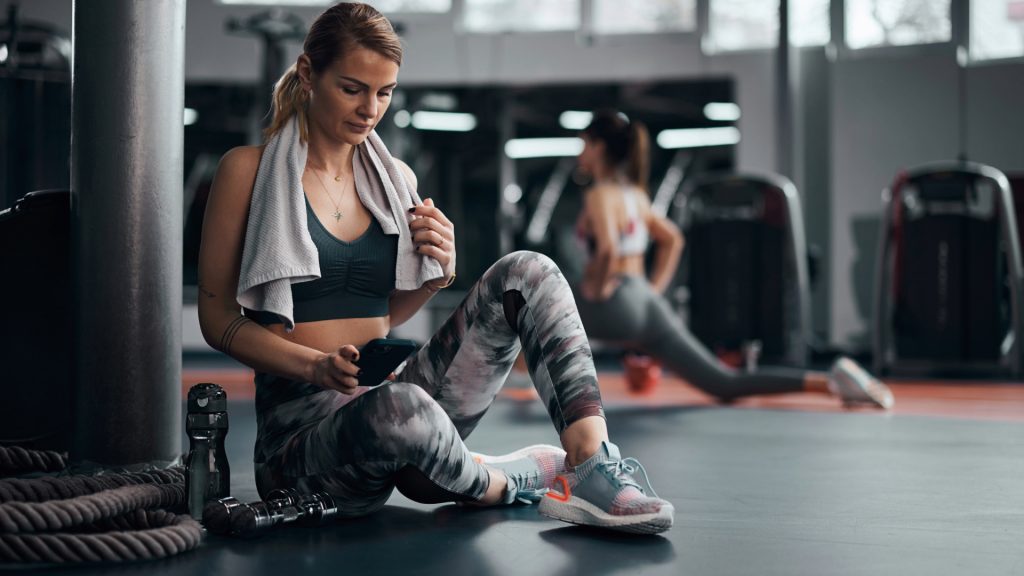
In the world of sports, every athlete is aware of the importance of physical preparation before a competition and mobility and stretching exercises, for warm-ups, have now become a common practice in every gym. But how much do we really know about the effectiveness of these practices and their impact on muscle elasticity? In this article, we’ll explore the science behind stretching and warming up and how these practices affect athletic performance.
Stretching and better elasticity: A myth to dispel
One of the main goals of stretching techniques is to increase the range of motion of the joints, improving muscle elasticity. But what exactly does “elasticity” mean? This term represents the extent to which a muscle can be stretched under a given amount of force. Essentially, an increase in elasticity translates into a greater range of motion, which is why these two terms are often used synonymously.
The Different Stretching Techniques
There are various types of stretching exercises, each with its own specific approach. Active or dynamic stretching involves contracting certain muscles to stretch others. Some subcategories include static, isometric, and ballistic stretching. On the other hand, passive or assisted stretching involves neuromuscular proprioceptive sensitivity, often requiring the help of a partner or therapist. The differences between these techniques can affect the overall effectiveness of stretching.
Stretching vs. Stretching Heating
Numerous scientific studies have tried to shed light on the effectiveness of stretching in preventing injuries and improving athletic performance. A group of researchers conducted a study to examine the impact of warming up on athletes of different ages, and came up with surprising results. They found that a dynamic warm-up, involving jumps and active movements, can have a positive effect on performance in activities such as vertical jumping and sprinting. This calls into question the traditional approach based on static stretching as the main part of the warm-up.
An astonishing study
The experiment involves female college athletes. After five minutes of jogging, these athletes experienced four different types of warm-ups:
- Static stretching, with five 30-second exercises
- Dynamic moderate/high intensity exercises.
- The same dynamic exercises, but with the addition of a vest of 2% of their weight
- The same dynamic exercises, with a vest that accounted for 6% of their body weight. The results were surprising.
Athletes who had experimented with dynamic exercise (groups B and C) performed significantly better in the vertical jump, compared to those who had only done static stretching (group A). In addition, the long jump benefited greatly from the dynamic warm-up sessions with the vest (group C). In conclusion, dynamic warm-up exercises, especially when personalized, seem to be more effective in preparing the body for physical exertion.
In the world of CrossFit, where power and flexibility are essential, warming up is a key part of preparation. In this article, we will explore a pre-workout mobility routine specially designed for CrossFit practitioners. This sequence will prepare your body to push its limits, improving muscle flexibility and joint mobility.
1. Preliminary Cardio Activity: Warm Up Your Engine
Imagine your body as a race car. To get started, you need to start the engine with a short session of light cardio activity. A brisk walk, a gentle jog on a treadmill or the use of cardio equipment such as a rower or stationary bike. The goal here is to gradually increase the intensity until you feel a moderate increase in heart rate and slight sweating. This step is like starting the engine of your race car, preparing your heart and lungs for the upcoming workout.
2. Foam rolling: Release tension
After the cardio warm-up, it’s time to move on to foam rolling. This practice aims to release tension in the muscles that will be most stressed during training. Focus on the critical points and run the foam roller over these areas for about 20-30 seconds each. Avoid doing deep stretches before you start lifting weights; reserve them for post-workout stretching or a later time in the day. If you’re uncertain about which muscles need special attention, consider consulting with a fitness professional. Here is a general checklist you should consider: calves, hamstrings, quadriceps, latissimus dorsi and pectorals.
3. Squat Mobilization: Prepare the Lower Body
On lower-body training days, squat mobilization is essential. Take a light weight as a counterweight and descend into a deep squat. Keep your back straight, your chest elevated, and your knees aligned with your toes. From this position, perform light movements, shifting your weight from side to side, pressing your heels into the ground, and pushing your knees forward over your toes, alternating between your legs. Be sure to push your knees outwards. This is how to prepare for a power performance, preparing your hips, legs, ankles, and your core for the upcoming workout. Also add a few full reps of squats to this ritual.
4. Push-Up Mobilization: Boost Your Upper Body
On upper body training days, start with a mobilization of push-ups. Take the push-up position and begin to perform a few push-ups, slowly lowering your chest toward the floor before pushing it up again. Make sure your arms extend fully in each repetition. Afterward, move your body from side to side with a few side push-ups. This is your time to prepare for strength, activating your upper body muscles and joints.
Next, raise your pelvis up and down in a position similar to that of the upside-down dog in yoga, then in a pose with the pelvis lowered and the chest raised, similar to the cobra pose. It further varies the position of the arms, involving the stabilizing and rotator muscles. This sequence of movements is your pre-workout choreography, preparing your torso, shoulders, arms, and back for the workout ahead.
Factors That Promote Pre-Workout Mobility
Motor Warm-Up: A specific warm-up improves dynamic flexibility by up to 20%.
Passive Heating: Passive warm-up, such as a warm bath, promotes joint mobility.
Workout Time: The middle of the day (afternoon or late morning) is ideal for maximizing mobility.
Factors That Can Impair Pre-Workout Mobility
Lack of Motor Warm-up: The absence of adequate motor warm-up can reduce mobility.
Low Ambient Temperature: Low temperatures (such as 18°C) can limit the range of motion of the joints.
Morning performance: Sporting activity in the morning after a night’s rest can be detrimental to mobility.
Fatigue and Stress: Fatigue and stress reduce your ability to manage movement and can impair mobility.
La chiave per un riscaldamento efficace
Pertanto, se desideri ottenere risultati eccezionali nei tuoi allenamenti, dovresti prestare particolare attenzione alla mobilità articolare e muscolare prima dell’allenamento. Preparare adeguatamente il tuo corpo con un riscaldamento mirato e personalizzato può fare la differenza tra una prestazione mediocre e una straordinaria. La mobilità articolare è la chiave per sbloccare il tuo potenziale, permettendoti di muoverti con grazia, precisione e controllo durante ogni esercizio. Non trascurare questa importante fase del tuo allenamento, poiché una preparazione corretta del corpo ti aprirà le porte a una gamma completa di movimenti e ridurrà il rischio di infortuni.
Bibliografia e letture consigliate:
Cereda, F. (2010). Dall’analisi posturale agli esercizi di mobilità articolare e di allungamento muscolare. Ed. Sporting Club Leonardo da Vinci, Milano.
Costa, G., Silva, E., Silveira, A., Novaes, J., Masi, F. di, Conceição, M., & Dantas, E. (2014). Acute effects of static and proprioceptive neuromuscular facilitation stretching on sprint performance in male swimmers. Medicina dello Sport, 67(1), 119-128.
Faigenbaum, A. (2006a). Acute effects of different warm-up protocols on anaerobic performance in teenage athletes. Pediatric Exercise Science, 18(1), 64-75.
Faigenbaum, A. D., McFarland, J. E., Schwerdtman, J. A., Ratamess, N. A., Kang, J., & Hoffman, J. R. (2006b). Dynamic warm-up protocols, with and without a weighted vest, and fitness performance in high school female athletes. Journal of Athletic Training, 41(4), 357-363.
Fradkin, J., Gabbe, B. J., & Cameron, P. A. (2006). Does warming up prevent injury in sport? The evidence from randomized controlled trials? Journal of Science and Medicine in Sport, 9, 214-220.
Gleim, G. W., & McHugh, M. P. (1997). Flexibility and its effects on sports injury and performance. Sports Medicine, 24(5), 289-299.
Gleim, G. W., Stachenfeld, N. S., & Nicholas, J. A. (1990). The influence of flexibility on the economy of walking and jogging. Journal of Orthopaedic Research, 8, 814-823.
Hart, L. (2005). Effect of stretching on sport injury risk: a review. Clinical Journal of Sport Medicine, 15(2), 113.
Herbert, R. D., & Gabriel, M. (2002). Effects of stretching before and after exercising on muscle soreness and risk of injury: a systematic review. British Medical Journal, 325, 468-470.
Ingraham, S. J. (2003). The role of flexibility in injury prevention and athletic performance: Have we stretched the truth? Minnesota Medicine, 86(5), 58-61.
Jones, A. (2002). Running economy is negatively related to sit-and-reach test performance in international-standard distance runners. International Journal of Sports Medicine, 23(1), 40-43.
Knight, C. A., Rutledge, C. R., Cox, M. E., Acosta, M., & Hall, S. J. (2001). Effect of superficial heat, deep heat, and active exercise warm-up on the extensibility of the plantar flexors. Physical Therapy, 81, 1206-1214.
Kokkonen, J., Nelson, A. G., & Cornwell, A. (1998). Acute muscle stretching inhibits maximal strength performance. Research Quarterly for Exercise and Sport, 69, 411-415.
LaRoche, D. P., & Connolly, D. A. (2006). Effects of stretching on passive muscle tension and response to eccentric exercise. American Journal of Sports Medicine, 34(6), 1000-1007.
Nelson, G., Kokkonen, J., Eldredge, C., Cornwell, A., & Glickman-Weiss, E. (2001). Chronic stretching and running economy. Scandinavian Journal of Medicine and Science in Sports, 11(5), 260-265.
Park, D. Y., & Chou, L. (2006). Stretching for prevention of Achilles tendon injuries: A review of the literature. Foot and Ankle International, 27(12), 1086-1095.
Pope, R. P., Herbert, R., & Kirwan, J. (1998). Effects of ankle dorsiflexion range and pre- exercise calf muscle stretching on injury risk in Army recruits. Australian Physiotherapy, 44, 165-172.
Pope, R. P., Herbert, R. D., Kirwan, J. D., & Graham, B. J. (2000). A randomized trial of preexercise stretching for prevention of lower-limb injury. Medicine and Science in Sports and Exercise, 32, 271-277.
Reisman, S., Walsh, L. D., & Proske, U. (2005). Warm-up stretches reduce sensations of stiffness and soreness after eccentric exercise. Medicine and Science in Sports and Exercise, 37(6), 929-936.
Roberts, J. M., & Wilson, K. (1999). Effect of stretching duration on the active and passive range of motion in the lower extremity. British Journal of Sports Medicine, 33, 259-263.
Shrier, I. (1999). Stretching before exercise does not reduce the risk of local muscle injury: a critical review of the clinical and basic science literature. Clinical Journal of Sport Medicine, 9, 221-227.
Shrier, I. (2000). Stretching before exercise: an evidence-based approach. British Journal of Sports Medicine, 34, 324-325.
Shrier, (2004a). Does stretching improve performance? A systematic and critical review of the literature. Clinical Journal of Sport Medicine, 14(5), 267-273.
Shrier, I. (2004b). Response to article by Thacker et al. (2004). Medicine and Science in Sports and Exercise, 36(10), 1832.
Thacker, B., Gilchrist, J., Stroup, D. F., & Kimsey Jr., D. (2004). The impact of stretching


